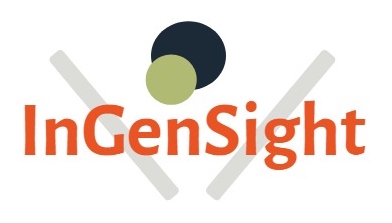Marketing to developers, operations pros and DevOps practitioners is hard. This group of experts is very smart which may explain why they are so cynical. They can sniff out marketing BS like a bloodhound and cannot be easily manipulated.
This reality makes it challenging for a marketer whose job is to sell them a product or service. To reach the greater DevOps community, marketers need to generate trust by adding value. Everyone values things differently so to be successful you need to know what it is that your audience needs. By engaging with your community and listening to them you can provide content that they care about.
Engage & Collect Insights
In order to be in the position to listen to your prospects, you need to be part of the conversation. One way to be part of the conversation is to start it. Great content can do this. Content marketers can start the conversation with articles and blogs that present new and controversial ideas. By presenting opinions and providing analysis, marketers can solicit feedback and initiate a conversation. Much like the DevOps process, this now creates a feedback loop that spawns new ideas that increase engagement.
Engaging your community where they are is also key to a robust conversation. You can create compelling content but if you post it in the wrong place it will miss your audience. Sites like Reddit, Stack Exchange, Hacker News and LinkedIn are prime channels for engaging the DevOps community. While engaging these communities works well, there is a risk negative comments and discussions can evolve. The trick is to be sincere and add value.
Attending meetups and conferences is also a productive way to engage the community. These events are not just for DevOps practitioners. Marketers can interact with thought leaders, influencers and practitioners to capture ideas and understand motivations. These events also provide an opportunity to coopt influencers into participating in your content development process.
Listen
Once engaged with a community you need to listen to them. That means really listen to them. What keeps them up at night, what decisions are they wrestling with? You need to listen so you can empathize. You also need to read between the lines or listen to what is not said. By reading between the lines you can understand some of the greater issues and identify some of the “elephants in the room” or thorny dilemmas that no one wants to talk about.
By engaging and listening you can understand what your community values so you can give it to them. How do you do this at scale? Not everyone in the community is going to have the same issues and concerns. Some in your community may be wrestling with what frameworks to use and some may just be trying to better understand the business case for DevOps. The challenge is to treat each DevOps professional as a person, not a community. This is where personas come in. Personas, when done right, capture the motivations and concerns of a certain group of readers. Personas embody a complete sketch of a target audience that would include demographic info but also key challenges and concerns. For example, a QA tester persona may include concerns about slowing the release cadence or understanding test coverage. A manager persona may note apprehensions on implementing DevOps culture or reducing risk. Personas enable content developers to empathize and connect with a defined type of prospect or influencer. If you are listening to your community you probably have a good idea of what some of their concerns are, the challenge is to fit these concerns into a persona that you can target with content that adds value to that individual. You can use some of the data that you have collected through community engagement to create your personas or you can ask your prospects and customers directly through one-on-one interviews or surveys.
Provide Value with Targeted Content
With personas and an understanding of your audience motivations and concerns, the content pyramid comes into play. Once we have segmented our community into personas, we also have to consider the context in which we position our content. Is the target reader just getting familiar with your company or solution or are they well versed on your value proposition and are evaluating how to invest their time or companies money.

Content should be targeted to each segment of the pyramid and provide value to the reader in the context of that stage in the buyer’s lifecycle. The bottom of the pyramid represents the early stages of the buyer lifecycle with the top the final stages. By providing value at each stage, your prospect will be more likely to move up the pyramid and advance in the buyer’s lifecycle. For example, you should have content designed to build awareness with managers as well as content that targets system admins as they evaluate solutions.
This probably seems like a lot of work, which it is, but think of your content as an investment, not an expense. More in-depth content higher in the pyramid has a long shelf life and investments made today can generate new leads and customers long into the future.
Reaching developers and technical professionals with marketing content is hard. You need to reach your prospects, customers, and influencers with valuable and unique content. Traditional rules do not apply and firms need to make the investment and commitment to a strong and disciplined content marketing strategy.
